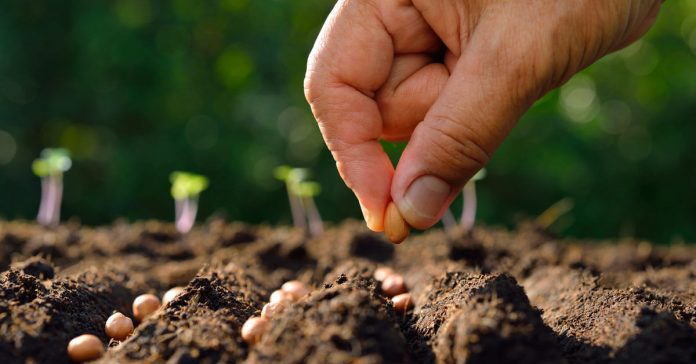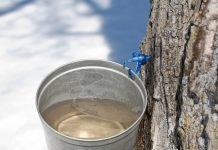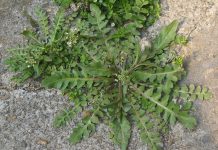Seeds are an important element to every strategy for long-term survival. Stockpiling food is a brilliant idea and everybody can do so, as there is no other way to get past the initial weeks and months after a disaster struck, but there’s a limit on how much you can store; inevitably you’ll have to start making your own. Foraging for wild food will eat up some slack, but eventually it would be far more labor-intensive than bringing it up.
The problem is: what are you going to grow? A glance through every catalog of seeds can easily inform you there are thousands of options to add to your stores? It’s appealing to have the largest possible range, but in reality that’s not a smart idea. The seeds you purchase need to be careful – you need the best varieties, and the correct amount of varieties.
You’ll spend more time and money on it for the same acreage if you produce a larger number of crops. That’s a strong reason for holding the amount as small as you can. On the other hand, you don’t even want too few crops. Therefore, the whole food supply is susceptible to an infection or disease that only appears to affect what you have. If you develop two things and one of them gets a disease, you’ve lost half of your food. If you grow ten things and one gets an infestation, you’ve only lost a tenth.
You have to think about future crops too. From this year’s seeds can be collected, but you may not want to develop the same crops every year – that can be a quick way to exhaust soil. It will help to spread the same crops around various areas so it does not harm either to change the individual crops every year or two. Getting a few extra varieties of seed on hand would allow you a lot more versatility.
Finally, ensure a balanced diet. Several crops are high in carbohydrates, some in proteins, some in fiber – but very few of all the nutrients you need are small. You need a blend of crops to keep yourself safe that will meet all your requirements.
And you need to get a variety of seed forms but not too many. Having the right mix differentiates between a positive story and hungry dissatisfaction. Avoid that by stocking all the seeds you’ll ever need on this selection:
1. Squash


Squash is a perfect food crop; rising quickly, and the fruit is rich in carbohydrates. It also includes many other nutrients such as magnesium, potassium, and vitamins A and C. The squash family is also large, which ensures you will find varieties that grow in nearly every area. Butternut squash and pumpkins perform better in mild climates, if you stay anywhere temperate or freezing, zucchini is the one you would aim for.
Squash is a very flexible crop too. It can be used in both sweet and savory recipes depending on the type. Also, it is simple to store. Whole squash will last up to three months in a root cellar. Alternatively, for long-term preservation it may be dried or dehydrated, and it often freezes well.
Squash seeds may be ordered, and growing seeds from your own field is also easy enough.
2. Potatoes
Potatoes are another crop high in carbohydrates and often contain a variety of other nutrients – they are a strong source of potassium, copper and vitamin B6. Potatoes may be produced from seeds; either purchase them on mature potato plants, or harvest them from seed pods. The downside of potato seeds is cultivating edible potatoes needing two seasons. The plants develop small tuberlets in the first year; using these as seed potatoes in next year to establish a real crop. On the other hand, long-term stockpiling of seeds. Keep a stock of seed potatoes just to cover the crop of the next season.
Related: How To Make Potato Flakes With 5 Years Shelf Life (without refrigeration)
3. Corn
This grows best in a warm climate, but you can recognize where it thrives and where it doesn’t if you stay in a growing field. Corn is a very versatile crop; it may even be dried and ground, aside from being consumed as a food, and then used to produce cornbread.
Corn is a wind-fertilized crop, so if you grow it in blocks instead of rows it can pollinate easier. One aspect to be mindful of with corn is that it’s vulnerable to inbreeding, so aim at growing at least 100 plants to maintain a healthy pool of genes.
4. Spinach


Spinach is another flexible plant which can be eaten cooked or raw as a salad. It is very healthy with lots of protein, copper, magnesium , manganese, potassium and vitamins A, B-riboflavin, B6, C, E and K. It is rising in spring and fall, and most (not all) varieties develop two crops a year. Growing is simple too.
Whenever you grow spinach, when it’s ready to harvest, do not select it all – allow a few plants to completely develop, then gather the seeds from the female plants. You will recognise the females by checking the small balls that emerge under the leaves; they are yellow on a male plant but green on a female. Let the plants grow until they turn yellow then pick them up, hang them upside down for two weeks in a cool dry place, then shake them to collect the seeds.
Related: 22 Cans You Can Purchase for $1 or Under
5. Beans
Many preppers in their grocery shops also have a lot of dried beans, for whatever really good purposes. Firstly, they are easy to handle, and they have a long shelf life. Second, they are flexible and can be turned into a large variety of recipes. Third, they are a perfect source of food and protein. Unfortunately, there is a limit on how many beans you can store, but the good news is that they can also expand quickly.
There is a big range of beans on the market but the navy bean is the most common option, if you want to produce beans for storage. You should load on canned green beans and peas. Certain types are bushes whilst others need a stick to grow; this will influence how much room they need. Most varieties favor colder weather, but in most of the contiguous 48 they can be produced.
6. Wheat


If you are worried about self-sufficiency, you need to rely on wheat being produced and processed. It is one of the most healthy things you can grow, being rich in calories, protein and nutrients, and it also has substantial quantities of B vitamin. It can be very labor-intensive to refine it into flour, but if you can manage that you’re able to be self-sufficient in proper bread.
Depending on personal tastes, there are lots of seeds you might introduce to your set, so if you have a decent stock of these six, store them properly and recycle them as required, you have the foundation for a reliable long-term food supply. Make sure you are using heirloom seeds – GMO seeds are also engineered to discourage them from growing their own viable seeds, causing farmers to purchase more seeds per year. Obviously that’s not perfect in a crisis, but search for more conventional non-GMO cultivars that can be raised after generation. Do it, and you will have an unlimited abundance of produce that will protect your food supplies for the long term.





















